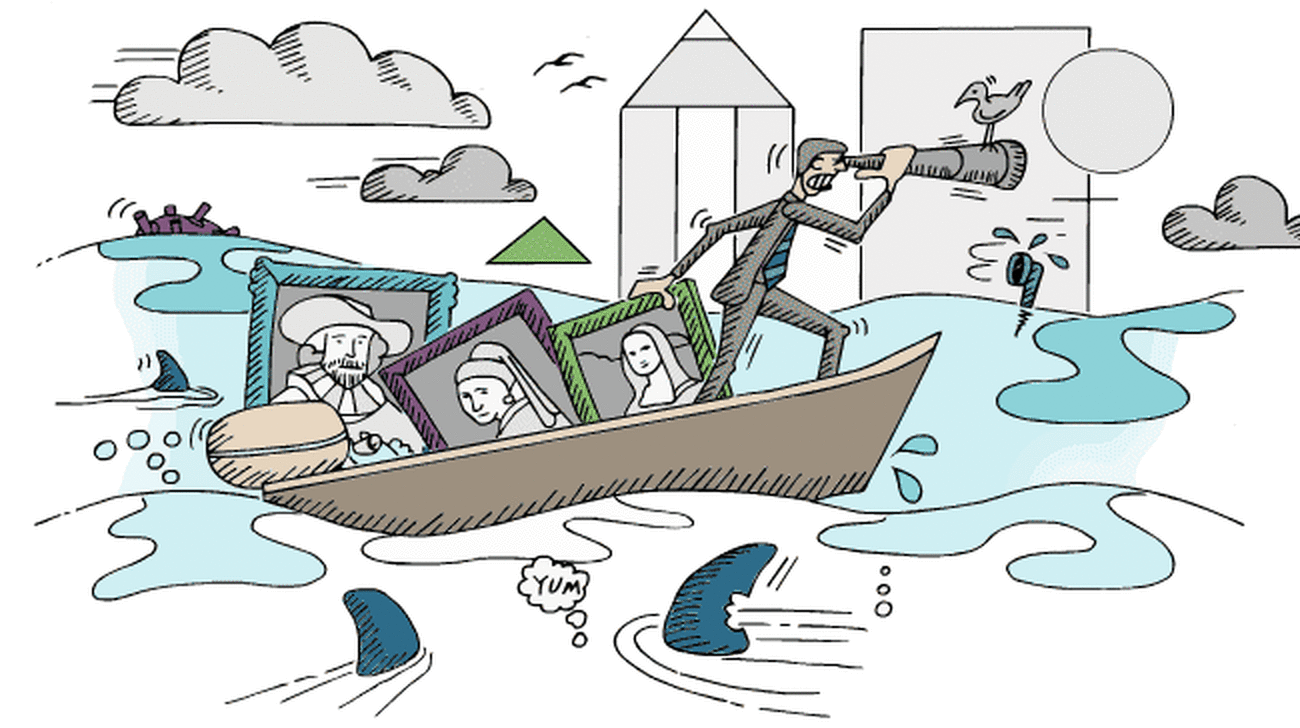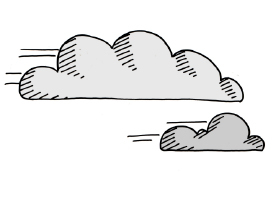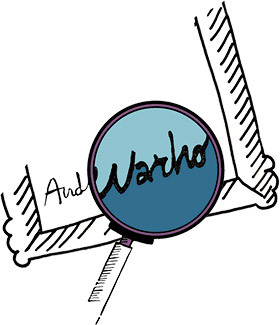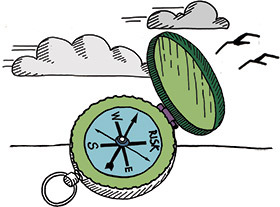Insights

By: Maria de Peverelli
Risk management for art collectors
Establishing a purpose
Collecting works of art can be a passion, a pleasure, even an addiction. Each collector views the activity differently but for many, the continuing rise in the value of art has meant that their collections now represent a far larger proportion of their total wealth than they ever expected.
As with other assets, though, there are significant risks involved in holding art and every piece comes with its own challenges. For our clients, strategic risk management increasingly looks beyond financial risk to take into account the unquantifiable threats to a family’s legacy, their social and cultural capital.
The importance of purpose
Most families recognise that the biggest risks to their wealth result not from a lack of financial risk management, but from shortcomings in their approach to passing on the baton to successive generations - in particular, a failure to define an agreed purpose for their wealth. (Four Pillars of Capital - The Next Chapter: Practical Wisdom for Changing Times, Stonehage Fleming, 2018).
“Purpose will mean different things to different people: what is an investment for one is a passion for another.
The same is true for the strategic risk management of an art collection. Establishing a purpose is vital. Purpose will mean different things to different people: what is an investment for one is a passion for another. If a collection’s main purpose is non-financial - philanthropic or in the interests of public education, for example - financial loss may not be the prime consideration.
On the other hand, if a collector’s objective is to use the works as an investment, the purpose will be entirely different. Whichever is the case, it is essential to understand the risk areas and take account of their impact on the collection.
Identifying risks
Broadly speaking, the risks associated with acquiring and owning an art collection can be divided into three categories: those related to the art world or the world at large, those associated with the buying or selling of the artworks and those connected to the work itself.
Macro forces
Economic, political and legislative changes can all have a significant impact on the value of and sale opportunities for an art collection. They can also affect the costs and logistics of moving works from one country to another, sometimes required at short notice.

Collectors should be aware of the Convention on International Trade in Endangered Species of Wild Fauna and Flora (CITES). It is one of several bodies which seeks to regulate or ban the trade of objects made from threatened species.
An impact will also be felt from changes imposed by the Fifth Money Laundering Directive which will bring increased scrutiny on collectors’ activities. Furthermore, the impact of Brexit on the art market is yet to be properly determined.
Tax laws need careful consideration and their impact is often underestimated by collectors. Specialist advice is required to understand the potential tax triggers along the chain from acquisition, through ownership and transfer. Buyers’ commissions may be accompanied by state or even city taxes. There may also be import duties in destination countries, costs associated with export licence applications, CITES certificates and other local licences.
Collectors should also be aware of the inheritance or succession laws in different jurisdictions. They may restrict their freedom to bequeath their collection to a museum or establish their own foundation. Ideally, important transactions should be made with the help of a tax adviser and a lawyer. Very often though these specialists are brought in late on in the process resulting in their being faced with problems that could have been avoided earlier.
Market volatility
Historically, average valuations across the art market have tended to move upwards over the long term. In the short term, however, it all depends on demand. This is influenced by economic prosperity and the fortunes of those with the means to become significant owners.
“Different artworks demonstrate correlations with a variety of asset classes.”
Different artworks demonstrate correlations with a variety of asset classes. According to the Deloitte Art & Finance Report 2019, Contemporary art shows a high correlation with the S&P500 while the Old Masters and Impressionists show the lowest correlation.
Interestingly, across genres, art has a stronger positive association with the price of gold than with other asset classes, suggesting that investors perceive art as a class that maintains its value. According to Artnet, returns on Old Masters have stabilised at a level below the S&P500 with no major changes since 2017.

Despite an apparent correlation between the art and stock markets, it should be noted there have been times when art prices have held up significantly better than share prices during periods of economic uncertainty.
Fashion
Changes in taste and fashion are linked to art market volatility. There are sectors with long track records that suddenly fall out of favour, such as so-called ‘brown furniture’. Meanwhile, the rise in the popularity of Contemporary art can be attributed to its being channelled into auctions due to a lack of supply in the other areas.
Authenticity
Understanding what you are actually buying, inheriting or receiving as a gift is just as crucial as knowing the parties in a transaction.
With Old Masters, attribution is often a question of opinion, as it is difficult to find documents confirming the complete history of an artwork from its creation in the artist’s studio. Add to this the fact that famous artists of that period were much imitated, with big workshops and several apprentices and the likelihood increases of acquiring a variant, copy or a work from the ‘school’ of an artist in question.
Often, technical analysis is the only way of reaching consensus. Inclusion in a catalogue raisonné - a comprehensive, annotated listing of an artist’s known works – is an essential first step. The same applies to Modern art while, with Contemporary art, the question of attribution is more straightforward.
Provenance
Understanding an artwork’s history is integral to knowing whom you are buying from. Does the documentation confirm what you are being told about its export from the country of origin? Are there any gaps in its provenance? Do they indicate the possibility that it was looted during the Nazi period or similar? Equally, antiquities may have been excavated illicitly.
Collectors should be mindful of the possibility that their name and reputation could be tarnished by association. But this swings both ways. While a lack of information about previous ownership can taint an artwork, a renowned, documented provenance can dramatically increase its value. Take the 2006 sale of Princess Margaret’s jewels at Christie’s, for instance. Some pieces sold for up to ten times their estimates, not because of the intrinsic value of the gems, but because of their previous owner.
“Collectors should be mindful of the possibility that their name and reputation could be tarnished by association.”
Buyers acquiring art from an established gallery or auction house should be able to take comfort in the reputation of the seller but caution is always advisable. Doing your own due diligence is never time or money wasted.
Condition
Having assessed the ownership and the authorship of an artwork, next comes its condition. Has a painting been restored or is it intact and un-lined? Has the patina of a bronze disappeared or is a piece missing from a sculpture, such as a nose from an antique bust? If so, a buyer should ascertain how relevant it is.
It may also be relevant to consider what materials the work is made of and whether or not some are perishable. If they are, was this intentional on the part of the artist or was it an experiment?
In the case of Contemporary artists using light bulbs or videos, what if they need to be changed, would the work still be deemed original? In order to maintain a work in good condition, it is important that it be kept in a carefully controlled environment. Shipping it from A to B, depending on its value and size, should be done by specialists as damage often occurs in transit. Crates get knocked or are left for too long in a climate which is either too hot or too cold.
The transaction
When it comes to transactions, the art market is largely self-regulated. Those rules that do exist vary from country to country, auction house to auction house, dealer to dealer and adviser to adviser. The lack of any recognised international standards for proving ownership, provenance, attribution, condition or even the parameters for technical analysis enhances the risk of acquiring a work which is not what it purports to be, or one with a tainted provenance.
The most important thing to establish is whether you know whom you are buying from and if they have the right to sell. The same is true when a work has been transferred several times between trusts, companies or other entities controlled by the same family. Technically, each of these entities is a legal body in its own right, possibly with liabilities and obligations to other parties and beneficiaries. The basis of each transaction needs to be properly documented and authorised by the trustees or directors.
“The most important thing to establish is whether you know whom you are buying from and if they have the right to sell.”
Insurance
Boring but important. It is essential to ask for a professional valuation of one’s works and update it every few years to follow the trend of the market. It is surprising to hear how often artworks are insured with values provided by the owners with no professional back-up. This of course becomes a problem in case of a claim.
Record keeping
Boring, again, but paramount. Keeping copies of invoices, shipping records, valuations, conservation reports, publications, exhibitions, changes of ownership, import and export documents is extremely important. They will all become essential in case of a transfer of ownership, be it a sale, a donation or a loan.

Conclusion
Like any asset, an art collection requires risk management. Unlike many other assets, it can have financial, cultural and emotional value. It is important therefore to consider the potential loss of all three when assessing risk. By working through a strategic risk management framework, the wide range of potential risks can be more easily managed. Defining a purpose for the collection is a vital first step.
Find out more about Stonehage Fleming's Art Management offering
Download 'MAY 2020 STONEHAGE FLEMING Risk Management for Art Collectors'